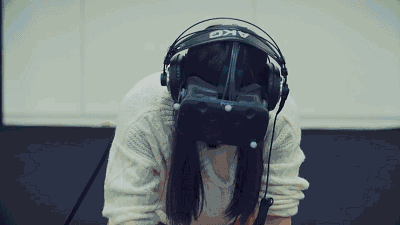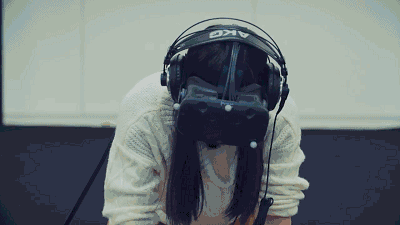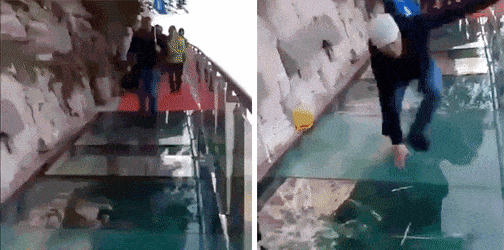Inborn Experience (UX in AR/VR)
Balance and Height in VR
Balance is an even distribution of weight enabling someone to remain upright and steady. There are different factors that influence the ability to support it. I compiled research and experiments around balance, as well as what can affect the sense of balance in VR or visually simulated high environments.
To keep balance, humans rely on different sensory stimuli. At least two of the following stimuli have to be used to succesfully support the mechanism of balance control: visual references from surrounding, vestubular cues, and somatosensory cues of the surrounding surfaces, which are described more in detail below.
Visual References
When standing high relative to our surroundings, the lack of having close objects as a reference point may cause loss of the sense of balance in many people.
Those who more heavily depend on visual references for balance control, rather than other physical sensations, may feel very unstable when standing at an elevation, also causing a fear of height. [
In VR, where immersion heavily relies on visual input, the sense of balance can also be influenced by visually simulated elevated environment.


Vestibular Cues
The vestibular system is the sensory system that provides the leading contribution to the sense of balance and spatial orientation for the purpose of coordinating movement with balance. [Wikipedia]
For full balance support, visual and vestubular cues are usually used to complement each other. Both cues combine to enable people to distinguish between moving stimuli and self-motion.
The visual system is responsible for capturing lower-frequency motions; whereas the mechanical vestibular system has a faster response and captures high-frequency motions. Thus, the vestibular system is initially more responsive to the beginning of a physical motion. Yet, after some time of sustained constant velocity, vestibular cues subside and visual cues take over. [The VR Book]
Somatosensory Cues of the Surface
The somatosensory system is the part of the sensory system concerned with the perception of touch, pressure, pain, temperature, position, movement, and vibration, which arise from the muscles, joints, skin, and fascia. [Nida Gleveckas-Martens]
Surface firmness plays a high role at elevated environments too, and feeling a solid surface under one’s feet would let them keep a better balance.
On well supported surfaces, balance relies mainly on somatosensory input. However, on a deformable surface, visual information becomes critical for control of balance. [P Simeonov, H Hsiao]
The same way, visually modifying surface firmness can influence and trick somatosensory cues into having a deformable or unstable support. In VR or other immersive experiences, when the surface visually breaks or disappears, it can also cause lost of balance.


Matching Virtual and Real Surfaces
Deploying a few senses at the same time enhances immersion into the VR experience. In some cases, matching physical properties of objects in virtual and real worlds is not only important for immersion, but can also be a cruicial part of the experience.
Being fully immersed into the virtual world, the player might anticipate being able to physically interact with virtual objects the same way they would with the real ones. The balance can be lost, if they expect but can’t stand, lean on, lift, or push cetrain objects.
Conclusion
- To keep balance people deploy visual, vestubular, and / or somatosensory cues from surroundings.
- People need visual cues from the closer objects to keep the sense of balance at higher elevations (in both real and simulated environments).
- Both vestibular and somatosensory cues heavily rely on visual feedback.
- Surface firmness adds to balance control, and should match visual cues.
